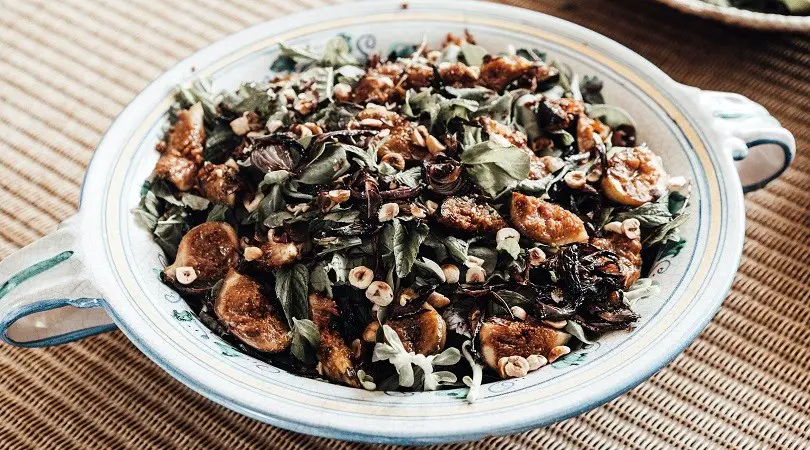Last Updated on January 6, 2025
In today’s fast-paced world, relying on processed and packaged foods can be easy. However, cooking with fresh, organic ingredients provides immense health benefits and brings joy to eating.
Studies show that diets high in processed foods are linked to increased risks for chronic diseases like heart disease, diabetes, and cancer. On the other hand, including fruits, vegetables, whole grains, and lean proteins can help prevent these conditions and promote overall well-being.
Additionally, research indicates that organic plant-based foods have higher antioxidant levels and more beneficial nutrients like vitamin C and zinc than conventionally grown foods.
Cooking from scratch enables you to tailor recipes to your dietary needs and preferences. You can easily avoid allergens, accommodate vegetarian/vegan diets, and control sodium and sugar levels. Most importantly, home cooking with fresh ingredients is rewarding. It provides an opportunity to unwind, de-stress, and reconnect with food. Chopping, sautéing, and simmering ingredients are therapeutic. Sitting down to enjoy flavorful, nourishing meals with loved ones strengthens bonding.
Home cooking is one of life’s simple pleasures in a world of fast food and TV dinners.
The Allure of Seasonal Produce
Nothing beats the flavor of fresh fruits and vegetables in the peak season. Take advantage of berries, stone fruits, tomatoes, corn, and zucchini in the summer. Make a mixed berry cobbler, homemade strawberry ice cream, or grilled peaches. As summer transitions into fall, figs ripen on the tree, allowing you to try a fig cookie recipe. The subtle sweetness of figs complements the earthy undertones in the dough, creating a delicacy that’s not only tasty but also packed with nutrients. Come fall, incorporate other fruits like apples, pears, squash, and Brussels sprouts into your cooking. Winter offers up hearty root vegetables like potatoes, carrots, and beets.
Creating meals around seasonal ingredients keeps your diet diverse and introduces new flavors. Visiting farmer’s markets and joining a CSA (community-supported agriculture) connects you to the seasonal rhythm. Preparing seasonal food also reduces your carbon footprint. Out-of-season produce is often imported via air travel from long distances. This emits high levels of greenhouse gases.
The Magic of Fresh Herbs
Herbs add immense flavor, fragrance, and nutrition to home cooked food. Some versatile options include basil, cilantro, parsley, thyme, sage, rosemary, oregano, chives, and mint. Maintaining a windowsill or backyard herb garden ensures you always have fresh herbs on hand. Snipping herbs before you cook preserves their delicate oils and aromatic compounds compared to dried herbs. Add chopped basil to tomato sauces and soups, cilantro to salsas and chutneys, and thyme to roast chicken or fish. Herbs infuse food with savory depth while allowing the core ingredients to shine.
Fresh herbs also provide an array of health benefits. For instance, parsley is loaded with vitamin K, which supports bone and heart health. Mint aids digestion, sage contains anti-inflammatory compounds, and oregano has antioxidants. Using herbs to season food enables you to cut back on salt, sugar, and fat for healthier home cooking. The beauty of herbs lies in their simplicity. With a small sprinkle, they transform flavors and make cooking magical. Keeping a thriving herb garden or buying fresh bunches weekly is one of the easiest ways to boost your culinary creations.
The Nourishment of Whole Grains
Cooking with minimally processed whole grains taps into an amazing source of fiber, vitamins, minerals, and plant-based protein. Whole grains like brown rice, quinoa, farro, buckwheat, and oats retain their nutrient-dense bran and germ, which get removed while processing refined grains. Enjoying whole grains regularly promotes satiety, gut health, and sustained energy levels. They also contain antioxidants and anti-inflammatory compounds that lower risks for certain cancers, heart disease, and diabetes.
Whole grains make perfect bases for grain bowls, salads, pilafs, and stuffings. For example, cook up a batch of farro or barley to add to a mixed green salad along with avocado, chickpeas, and vinaigrette.
Whip up steel-cut oatmeal topped with fresh fruit, nuts, and honey for breakfast. Swap out white pasta for whole wheat, or try alternative grains like quinoa or brown rice pasta. The options are endless once you incorporate nutrient-packed whole grains into your cooking routine. Check the ingredient list when purchasing packaged grains to ensure you get 100% whole grain products. With so many health perks, whole grains should be a kitchen staple.
The Vibrancy of Vegetable Spiralizing
Turning veggies like zucchini, beets, carrots, and sweet potatoes into noodle shapes makes them perfect lower-carb or gluten-free substitutes for traditional pasta. They add gorgeous color to any plate with vibrant orange, red, green, and yellow hues. Spiralizing vegetables only takes minutes, and no fancy equipment is required. Simply use a spiralizer gadget or julienne peeler to transform veggies into long, spaghetti-like strands.
Zucchini noodles are one of the most popular spiralized options. They work well in pasta dishes, absorbing the flavors of sauces wonderfully. Try them tossed with pesto, marinara, or Alfredo sauce for a fresh take on a classic pasta night.
Mix in spiralized carrots or beets along with the zoodles for added nutrition. You can also embrace spiralized veggies as a base for noodle bowls. Top sweet potato noodles with sesame ginger sauce, sautéed shrimp, edamame, and scallions for a hearty, low-carb meal. Let vegetable spiralizing infuse your meals with a rainbow of colors, flavors, and nutrients.
The Comfort of Homemade Soups
Nothing compares to homemade soup when you’re feeling under the weather or need something warm and comforting. While canned soups can never replicate the flavor of homemade, preparing your nourishing soups is easy. The process of simmering bones, vegetables, beans, or grains to extract deep, savory flavor is rewarding.
Some classic homemade soup options include chicken noodles, minestrone, lentils, split peas, and potato leek. For an extra nutrition boost, blend roasted vegetables like carrots, onions, and celery before adding to the soup. Make a large batch on cozy weekend days to have easy lunches for the week. Nothing feels as comforting and nourishing as a steaming bowl of homemade soup on a chilly evening.
The Simplicity of Salad Dressings
Store-bought salad dressings are often filled with preservatives, added sugars, and sodium. Making your healthy dressings at home takes just minutes. It allows you to control ingredients and customize flavors to your taste. All you need is base oil, vinegar or citrus juice, and seasonings.
For vinaigrettes, combine olive oil with balsamic vinegar or lemon juice, then flavor with Dijon mustard, garlic, herbs, and shallots. For creamy dressings, blend Greek yogurt, buttermilk, or avocado with lemon juice and spices. You can also make oil-free dressings by blending flavorful fruits and vegetables into sauces—for instance, puree mango, peach, or strawberry with a splash of vinegar and ginger. Homemade dressings surpass bottled ones in taste, nutrition, and affordability.
Conclusion
Cooking wholesome meals with fresh, seasonal ingredients nourishes your body and enriches your life. It enables you to control exactly what goes into your food and reconnect with its origins. Preparing food from scratch does require more effort than takeout or packaged items. However, the benefits for your physical and mental health make the extra time invested worthwhile. In a fast-paced digital world, home cooking grounds you and provides sanctuary. The kitchen awaits your next culinary creation.








